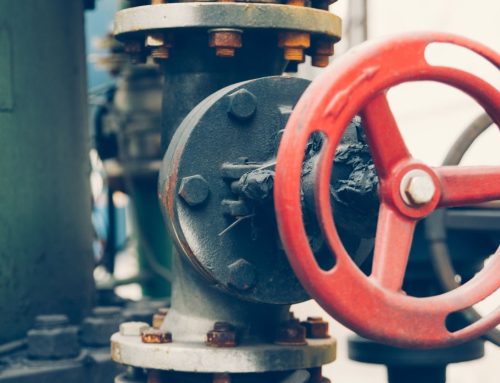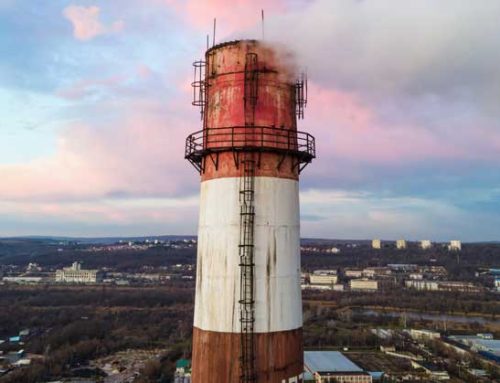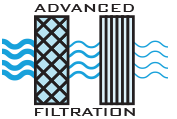Here at Advanced Filtration, we’re all about making sure our customers have optimized industrial filtration systems to ensure efficiency and financial savings without compromising air quality. One of the best ways of doing this is by using reverse pulse dust filters, which work in an innovative way to remove dust particles from the workplace.
But how does a reverse pulse filter work? In this article, which is Part I of a two-part series on Reverse Filter Pulse Cleaning Systems, the industrial filter experts at Advanced Filtration will explore the mechanics of a reverse pulse filter, the various components, and operational guidelines for best results. Check out Part II here.
What Are Reverse Filter Pulse Cleaning Systems?
Let’s start with some definitions. A reverse pulse, also known as a “pulse jet” or “reverse jet,” is a type of filter cleaning system. While simple in design, the system produces effective results.
The system follows the same basic mechanics as a regular dust collector — but with a twist.
Air flows from the outside of the filter to the center, leaving filtered dust particles on the outside of the filter. A blast of compressed air is pushed through the filter’s center, causing the dust to follow a downward flow movement and accumulate in a collection bin, also known as a hopper.
The jet of compressed air pulses in a reverse direction, dislodging fine particles stuck in the filter.
What Are Reverse Filter Pulse Cleaning Systems Used for?
Effective cleaning systems ensure dust and contaminants don’t build up on the filters.
Reverse pulse cleaning systems are effective in many industrial applications with the capacity to handle heavy dust burdens. They work continuously without the requirement for a shutdown period.
Industrial filtration systems offer benefits by using innovative and effective technology. Power, chemical, and pharmaceutical companies, as well as cosmetic and biotech industries, use reverse filter pulse cleaning methods.
By ensuring superior air quality, brands enjoy the following benefits of premier reverse filter systems:
- Prevent compressor blade erosion, fouling, and corrosion
- Reduce cooler passage plugging
- Reduce rotor imbalance
- Prevent blocking of turbine blade roots
- Save on fuel consumption
Regardless of the industry in which they are being used, pulse-cleaning systems prolong the life of a filter and lower the cost for replacement filters, while saving on operating costs.
The Main Components of a Reverse Filter Pulse Cleaning System
The pulse-cleaning mechanism involves various components that work together to produce desired results.
Compressed Air Reservoir
Compressed air is stored in the reverse pulse air reservoir (usually at 4.5 bar). The reservoir holds the correct amount of compressed air used for the pulsing action. The pressure must maintain a certain level to maintain efficiency.
Pulse Valve
The pulse cleaning valves are solenoid valves located above the reverse pulse reservoir, with one valve for each row of filter elements. The valve connects to a reverse pulse cleaning tube which distributes the pulse to the filter elements. The solenoid valve opens up to push compressed air into the filters (in a reverse direction).
Definition: A “solenoid valve” is an electromechanically operated valve that functions by opening or closing an orifice in the valve body.
Timer
A timer controls the frequency of pulsing. The timer determines how often the compressed air injects into the filter elements and clears the contaminant particles.
Note: A scheduled duration of cleaning uses a timer, but the pulses can also be controlled by setting a high limit on the differential pressure gauge.
Filter
The dust collection filters do the actual dirty work of handling the dusty material. While the design may change from one brand to another, the filter typically connects to a bin vent. For the best results, the filter should offer 100% mechanical filtration technology, have durable construction, and use hydrophobic surface treatments.
How a Pulse Clean System Works
A reverse pulse filter cleaning system sends a pulse of compressed air down the center of the filter, pushing the dust in a downward flow into a dust collector (or a collection bin).
Different Types of Cleaning
There are two main types of cleaning used in the reverse pulse system:
- Online cleaning
- Downtime cleaning
The pressure gauge controls online cleaning. The fan runs as related to the high and low limits on the differential pressure gauge. The high limit sets the point when the pulse cleaning begins. As a guideline, the low limit should be within one inch of the static pressure variance.
Downtime cleaning occurs when the fan is shut off completely. A control panel or timer board controls the duration of cleaning. Downtime cleaning is guided by the daily usage of your dust collector, usually on a five or ten-minute cycle.
Pulse Clean System Mechanics
Pulse cleaning helps dust collectors maintain a steady airflow and run at optimal efficiency. When the pressure drop reaches a predetermined level, the pulse-cleaning system sends a burst of compressed air from the reverse pulse air reservoir through reverse pulse cleaning tubes.
Strategically-placed holes in the tubes point the air directly into the open end of the filter elements. The pressure inside the filter element is enough to overcome the opposing pressure and creates a reverse flow. In most instances, the flow is several times the flow velocity in the forward direction, creating an outward force.
Accumulated solids on the outer face of the filter element are fractured and drop down and away from the filter element. Any dust collected on the filter’s media is pushed into the collection hopper.
The reverse flushing of compressed air cleans the filter cartridges by removing the filter’s dusty barrier to improve efficiency. The pressure is stabilized, and the filter’s life increases.
Premier Web Filters for Advanced Filtration
Are you looking for ways to make your industrial filters more efficient? Invest in Advanced Filtration’s full line of Braden Filtration LLC filters and make your operations more cost-effective and efficient. Cut back on expenses and enjoy a high return on investment when you choose our premium filtration solutions. Contact our expert team today for more information.
And check out Part II of our series on reverse pulse cleaning systems, where we discuss issues with operating and optimizing your system.








